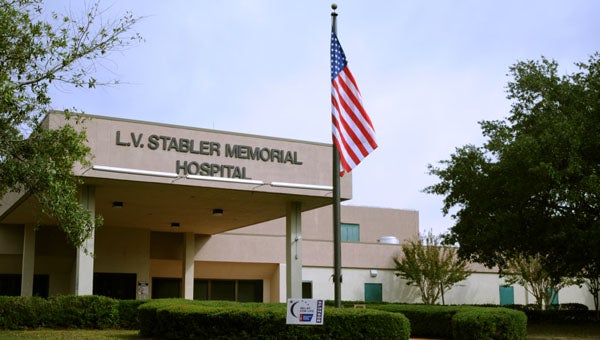Region joins trauma system
Published 5:07 pm Friday, August 22, 2014

L.V. Stabler Memorial Hospital is one of 13 trauma centers in Region 5. The hospitals in the system are rated as Level I, Level II and Level III facilities. A Level I facility can accept the most complex cases, while a Level II can accept more complex cases than a Level III. L.V. Stabler is rated ad a Level III facility.
L.V. Stabler Memorial Hospital is now part of a statewide trauma system that was activated Thursday.
The activation of Region 5, which includes L.V. Stabler, means there is now statewide coverage.
There are no 57 participating trauma centers in the system.
“The main reason the system was established was to get patients to the appropriate facility as quickly as possible, especially in situations where there are multiple traumas,” said Dr. Alzo Preyear, director medical services at L.V. Stabler.
The hospitals in the system are rated as Level I, Level II and Level III facilities. A Level I facility can accept the most complex cases, while a Level II can accept more complex cases than a Level III.
L.V. Stabler is rated ad a Level III facility.
Preyear says the new system speeds up the process of getting patients to facilities capable of handling the particular trauma the patients has suffered.
“It saves time in critical situations,” he said. “Before it was a process of calling around to facilities that we knew were capable of handling the trauma, but if those hospitals were maxed out, we’d have to continue to call around. Now we can look at this system and see which services are available at each trauma center.”
When EMS is called to a accident, the workers on the scene call a trauma communication center with details of trauma they have encountered, the workers are advised of the closest hospital with the ability to take care for that type of trauma.
Preyear said if a patient is stable, EMS can transfer the patient to the nearest facility with the ability to handle the trauma rather than transporting the patient to the nearest hospital.
“If a patient needs to be stabilized, they will still be transported to the nearest hospital, but if they are stable, they can be transported to a hospital that can best treat their trauma,” he said.
For example, if there is an orthopedic case and a hospital doesn’t have orthopedic coverage on a thatday, that patient can be taken directly to the nearest hospital with the ability to treat the injury.
Patients still have the right to choose where they wish to be treated if they are conscious and alert.
There are 18 counties in the Southeast region, and 13 participating hospitals.
Region five includes Autauga, Barbour, Bullock, Butler, Coffee, Covington, Crenshaw, Dale, Elmore, Geneva, Henry, Houston, Lee, Lowndes, Macon, Montgomery, Pike and Russell counties.
“With the activation of Region 5’s trauma centers we now have all of our state operating within the Alabama Trauma System,” said Dr. William Crawford, EMS medical director. “This should lead to fewer lives lost due to traumatic injuries, along with reduced health care costs and reduced hospital stays due to trauma. I certainly appreciate all of the hard work by all of the stakeholders to bring Region Five online in the Alabama Trauma System.”
Regions that are already participating in the trauma system have noted reduced hospital stays, which indicates timely trauma center arrivals to the appropriate hospital with the resources to treat their injuries, the ADPH reported.





